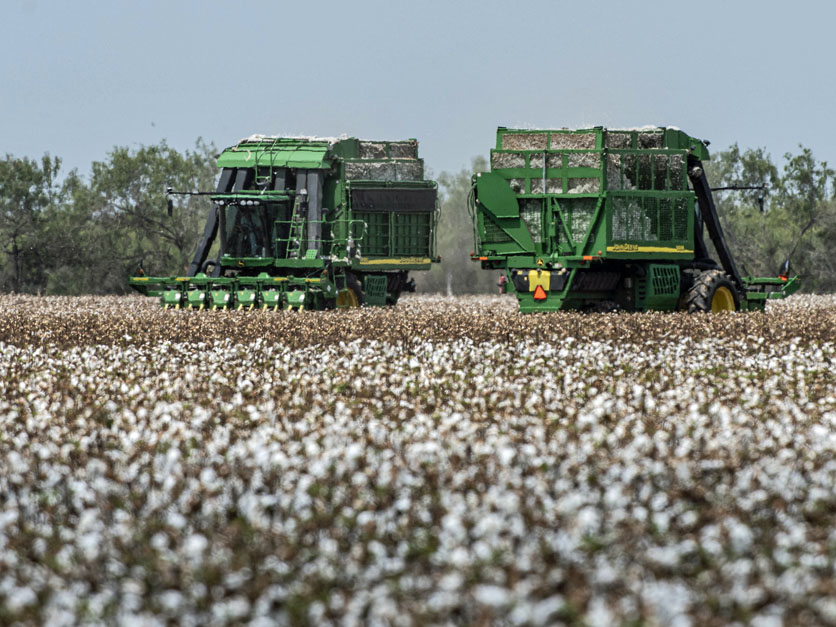Rep. Jim Baird, R-Ind., and 65 of his Republican colleagues are urging EPA to take steps to ensure growers can continue to use dicamba in over-the-top applications.
The agency announced in December that it was considering further restrictions on the herbicide, saying in a report that measures imposed for 2021 had failed to reduce complaints of herbicide drift.
In a letter to Administrator Michael Regan, the lawmakers claim that report is flawed and fueling litigation over the weedkiller. They also note that farmers have already placed orders for the chemical to use during the upcoming growing season.
“We urge the EPA to abandon its path of recent actions on this critical crop protection tool and to work with state regulators, grower organizations, and registrants themselves to ensure these products remain on the market and available to growers,” the lawmakers say.
EPA hasn’t set any new restrictions for the 2022 growing season. The agency said in December that training programs using the 2021 restrictions could continue.
Biden unveils Indo-Pacific Strategy with little for trade
The White House on Friday released an explanation of the core tenets of its much-anticipated Indo-Pacific Strategy aimed at tightening U.S. relationships with key allies such as Japan, South Korea, Thailand and India. Groups like the U.S. Chamber of Commerce were not expecting the strategy to be anything like free trade agreements that would increase access to foreign markets for U.S. exports, and they were proven correct.
The strategy aims to improve Indo-Pacific prosperity and security as well as build the region’s ability to deal with “transnational threats.”
“While President Biden’s Indo-Pacific Strategy provides a broad-brush foreign policy approach for this important region, the outline for building closer economic ties remains vague,” says Sharon Bomer Lauritsen, founder of AgTrade Strategies LLC and former assistant U.S. Trade Representative for agricultural affairs and commodity policy.
“Certainly, it appears that the administration at this time is not looking to negotiate a trade agreement that will help U.S. agriculture compete with countries in the region,” she said. “Expanding market access opportunities through new trade agreements would diversify export markets and strengthen prices to the benefit of America’s farmers and ranchers.”
Survey: Cotton acreage to expand amid soaring prices
Farmers are expected to increase cotton acreage by about 7% this year as growers try to take advantage of prices that are the highest they’ve been in years. According to the National Cotton Council’s annual survey of planting intentions, farmers are expected to plant about 12 million acres this spring, up from 11.2 million acres in 2021.
 Cotton harvesting
Cotton harvesting
Cotton prices have been running $1.25 per pound in recent days, about double the average price in 2019 and 2020 and well above last year’s average of just over 90 cents per pound.
“It's good to have options,” Alabama producer Mike Tate said of the strong commodity prices farmers are seeing. He noted that fertilizer prices and other production costs are much higher as well.
Take note: Cotton producers are heavily dependent on exports and the industry is facing the same supply chain disruptions as other sectors. A large portion of the U.S. crop is shipped via the heavily congested port of Long Beach.
Canada truckers took toll on meat trade
Canadian authorities cracked down over the weekend on truckers blocking bridges to the U.S., which will be a relief to U.S. and Canadian beef and pork traders who ship almost all of their products by truck.
Blockage of the Ambassador Bridge was of primary concern to U.S. exporters because it’s the gateway to Toronto and traffic has been diverted for the past week to the smaller Blue Waters Bridge, says U.S. Meat Export Federation spokesman Joe Schuele. That was creating significant delays, forcing some U.S. exporters to put off shipments. The U.S. sent roughly $1 billion worth of pork to Canada in 2021, Schuele said.
And it’s not just meat that has been impacted. “You’ve got a lot of agricultural trade taking place at those crossings, whether it’s feed grain, feeder pigs coming south, feeder cattle going north.”
FSA chief: Fertilizer shortage could lead to CRP enrollment
High fertilizer prices could lead more producers to consider taking their land out of crop production and enrolling it in CRP, Farm Service Agency administrator Zach Ducheneaux said in an interview with Agri-Pulse.
“The price of fertilizer is skyrocketing right now,” he said. “I think that's actually going to probably drive more folks to look at CRP as an option.”
However, Ducheneaux said it’s still “very early” to tell what CRP enrollment will look like until the general signup closes March 11. Enrollment began Jan. 31. The grassland signup starts April 4 and ends May 13.
Keep in mind: Corn and soybean prices are also soaring, and that could in turn discourage farmers from taking cropland out of production.
They said it: A senior Biden administration official, trying to describe the Indo-Pacific Strategy in relation to the Biden administration’s China strategy, said: “We recognize the limitations in our ability to change China, and therefore seek to shape the strategic environment around China by building a balance of influences that advances the future we seek, while blunting Beijing’s efforts to frustrate U.S. objectives and those of our partners.”
Send questions, comments and tips to bill@agri-pulse.com




